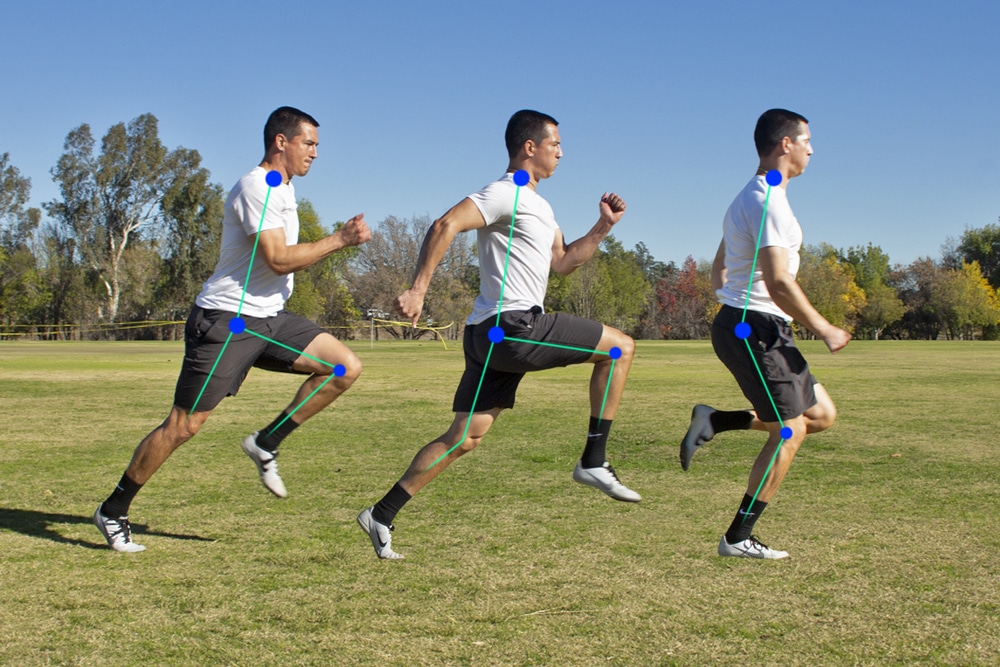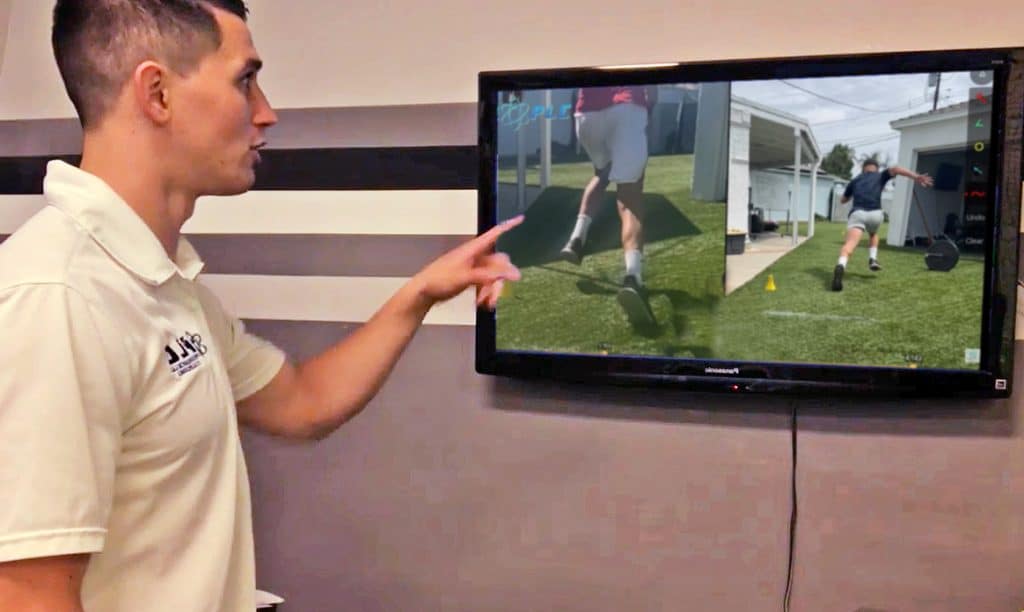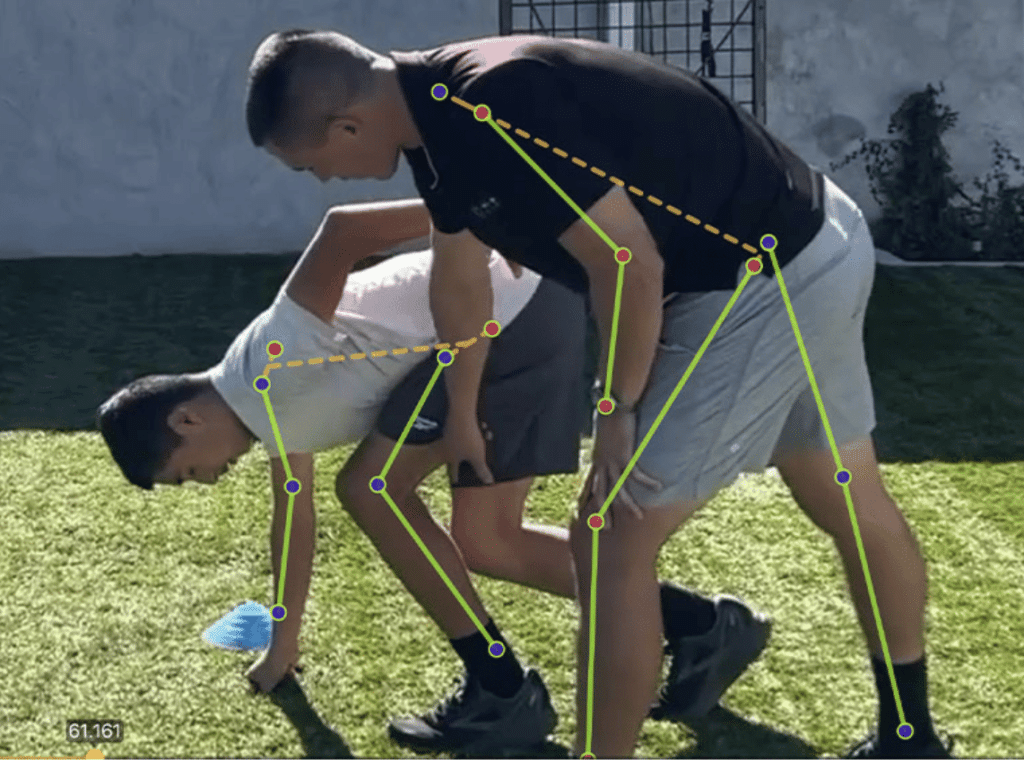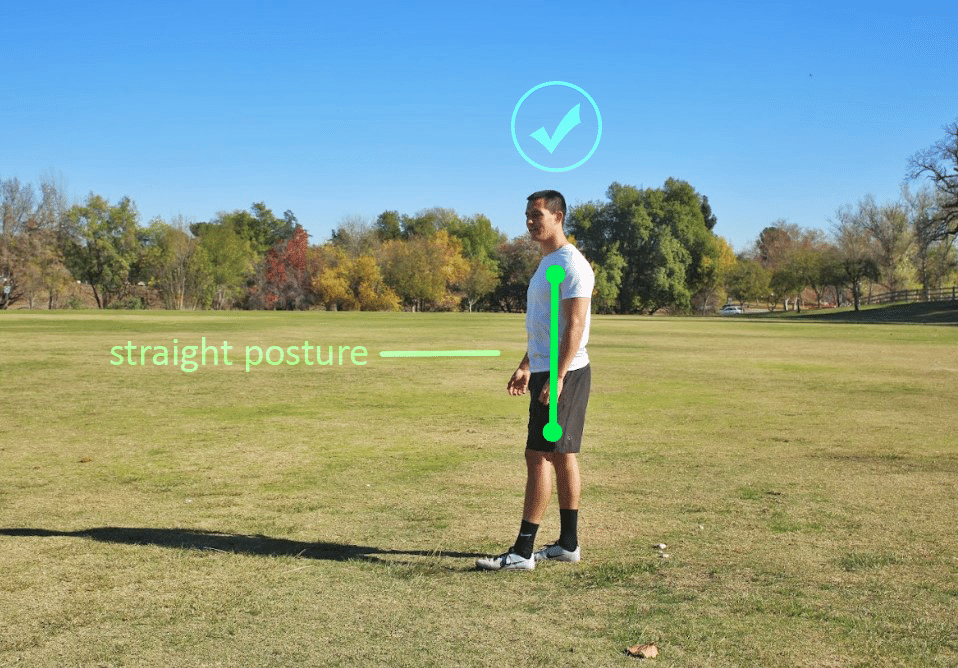Unlock Your Speed: The Ultimate Guide to Sprint Workout for Explosive Performance
Jul 12, 2024
Are you ready to unlock your speed and unleash your full potential? Sprint workouts are a game-changer for athletes and fitness enthusiasts alike, boosting cardiovascular fitness, power, and endurance. In this ultimate guide, we’ll explore the science behind sprint training and share expert tips on designing effective sprint workout programs, covering
essential components, sample workouts for different fitness levels, and common mistakes to avoid. Let’s get started on the road to explosive performance!
Key Takeaways
-
Unlock explosive performance with sprint workouts: Learn the science behind it, design an effective program and assess your fitness level.
-
Balance intensity & recovery for optimal training, prevent common mistakes like overtraining & poor running form.
-
Maximize results by combining sprints with strength training and utilizing periodization principles!
The Science Behind Sprint Workouts

Understanding the underlying science is key to appreciating the benefits of sprint workouts. Sprint training is a powerful tool that can transform your cardiovascular fitness, muscle activation, and force production, leading to improved speed, power, and endurance. So, what makes sprint workouts so effective, and how do they differ from other forms of exercise? Let’s delve further into the realm of sprinting.
Anaerobic vs. Aerobic Exercise
Sprinting is primarily an anaerobic exercise, characterized by short bursts of intense activity that tap into your body’s stored energy sources. In contrast, aerobic exercise involves longer, sustained activities fueled by oxygen. Both types of exercise contribute to lean muscle mass development, but anaerobic exercise is particularly effective for building strength and power. Integrating sprint workouts into your training routine can lead to enhanced force production, lowered risk of injury, and increased joint stiffness.
It’s worth noting that aerobic exercise also plays a vital role in sprint training. Building and maintaining endurance through aerobic activities enables athletes to sustain their speed for extended periods and aids in recovery. Appreciating the differences between anaerobic and aerobic exercise enables you to craft an all-encompassing sprinting routine that harnesses the benefits of both types of training.
Muscle Activation in Sprinting
When sprinting, muscle activation is characterized by a rapid increase in force production and a high rate of muscle fiber recruitment. Our muscles contain two primary types of fibers: type I (slow-twitch) and type II (fast-twitch). Type I fibers are responsible for endurance activities, while type II fibers provide explosive power and speed necessary for sprinting. A well-designed sprint session should focus on activating and strengthening these type II muscle fibers for optimal performance.
Incorporating speed workouts into your training can help you develop these muscle fibers and improve your overall sprinting performance. Activities such as uphill running can be particularly beneficial, as they target your quadriceps and build explosive strength and power. Grasping muscle activation during sprints and including specific exercises will set you on the path towards achieving your maximum speed.
Designing an Effective Sprint Workout Program
Designing an effective sprint workout program is all about finding the right balance. It involves assessing your current fitness level, setting realistic goals, and carefully managing the intensity and recovery of your workouts. With the right approach, you can create a program that pushes your limits, helps you achieve your goals, and keeps you motivated throughout your fitness journey.

Assessing Your Current Fitness Level
Evaluating your current fitness level is a critical step before starting sprint workouts. Starting with a solid foundation of fitness ensures you’ll be able to handle the demands of sprint training and minimizes the risk of injury. To evaluate your fitness level, consider factors such as:
-
Aerobic fitness
-
Resting heart rate
-
Flexibility
-
Muscular strength
Performing exercises like push-ups, planks, and the sit-and-reach test can help you get a clear picture of your current abilities.
Once you have a good understanding of your fitness level, you can tailor your sprint workouts accordingly. Beginners should start slowly, focusing on building up a base level of fitness before introducing sprinting into their exercise routine. As you progress, you can gradually increase the intensity and volume of your sprint workouts to match your improving fitness level.
Setting Realistic Goals
Establishing achievable goals aids in maintaining motivation and ensuring steady progress in your sprint workout program. To set achievable goals, consider factors such as your current fitness level, available time, and desired outcomes. Additionally, assess any potential risks or injuries that could arise from the workout program to ensure you can reach your goal safely.
One example of a realistic goal for a sprint workout program is to improve sprint speed and endurance. To achieve this, you can incorporate interval training and specific sprint workouts designed to help you maintain sprint velocity for as long as possible. By setting challenging but achievable goals, you’ll be more likely to stay committed to your program and see the results you’re after.
Balancing Intensity and Recovery
Balancing workout intensity and recovery is vital to avoid overtraining and maximize the benefits from your sprint workouts. Pushing yourself too hard without allowing for adequate recovery can lead to fatigue, injury, and decreased performance. To maximize your results and promote recovery, try performing pure speed training and more intense sprint workouts on separate days.
Post-sprint workout, aim for a 20-30 minute aerobic activity that is easier in pace. This will not only help you maintain your results but also aid in recovery. Properly balancing intensity and recovery also involves adjusting the intensity of your sprint workouts according to your fitness level. By listening to your body and adapting your training as needed, you can avoid overtraining and make the most of your sprint workout program.
Essential Components of a Sprint Workout
An effective sprint workout consists of three key elements: warm-up exercises, sprint drills & techniques, and cool-down & recovery processes. Each of these elements plays a crucial role in ensuring you get the most out of your sprint workouts while minimizing the risk of injury.
Let’s explore each of these components in more detail.

Warm-Up Exercises
Performing warm-up exercises before a sprint workout prepares your body for the rigorous demands of sprinting and mitigates injury risks. Proper warm-up exercises can include easy jogging, speed drills like butt kicks and high knees, and calf raises. These activities will get your body warmed up and ready for the high-intensity sprint exercises that follow.
In addition to preparing your body for sprinting, warm-up exercises can also help improve your overall performance. By incorporating dynamic stretches and drills into your warm-up routine, you can enhance your running form and efficiency, leading to faster sprint times and better results.
Therefore, never forgo the warm-up – it’s a crucial contributor to your sprint workout’s success!
Sprint Drills and Techniques
Practicing sprint drills and techniques is instrumental in enhancing your running form, efficiency, and overall performance during sprint workouts. Some examples of effective sprint drills include hill sprints, interval sprints, and power development workouts. These activities can help you push your boundaries, challenge your body, and maximize your sprinting capabilities.
Focusing on proper sprinting technique during your workouts is also essential for preventing injuries and ensuring you get the most out of your sprint training. By honing your sprint technique and incorporating targeted drills, you’ll become a faster and more efficient runner, ready to tackle any challenge that comes your way.
Cool-Down and Recovery
The cooling down and recovery phase after a sprint workout is as important as the workout itself. These practices help prevent injury, promote muscle repair and growth, and ensure you stay energized and healthy. Examples of cool-down and recovery exercises include light jogging or walking, stretches for the upper and lower body, and various yoga poses.
In addition to incorporating these exercises into your workout routine, it’s essential to prioritize rest and nutrition between workouts. Getting enough sleep, eating a balanced diet, and staying hydrated all play a crucial role in promoting recovery and keeping you feeling your best. By prioritizing cool-down and recovery, you’ll set yourself up for success in your sprint workout program.
Sample Sprint Workouts for Different Fitness Levels

No matter your fitness level, there’s a sprint workout tailored to help you achieve your goals. In this section, we’ll provide sample sprint workouts for beginners, intermediates, and advanced athletes. Each workout is designed to challenge you and push your limits, helping you improve your speed and endurance while staying safe and injury-free.
Beginner Sprint Workout
If you’re new to sprint workouts, a beginner program is a perfect starting point. This type of workout focuses on building a solid foundation of fitness and gradually increasing intensity as you progress. A sample beginner sprint workout could include a 15-minute warm-up, followed by three sets of strides – short bursts of sprinting followed by recovery periods. With consistency and dedication, you’ll soon be ready to tackle the best sprint workouts.
As you become more comfortable with sprinting, you can increase the intensity of your workouts by adding more sprints or adjusting the sprint and recovery times. Remember, it’s essential to start slowly and focus on building a strong fitness base before introducing more intense sprinting into your exercise routine.
Intermediate Sprint Workout
For those with a solid fitness base, an intermediate sprint workout can help take your training to the next level. This type of workout increases the intensity and volume of sprints while still allowing for adequate recovery. A sample intermediate sprint workout might involve alternating between high-intensity sprints and periods of active recovery, such as jogging or walking. Incorporating the following sprint workouts into your routine can further enhance your performance.
Interval training, particularly sprint interval training, is an effective way to push your limits and challenge your body in new ways as part of your fitness routine. As you progress, you can adjust the number of sprints, intensity levels, and recovery times to continue pushing your boundaries and maximizing your results.
Advanced Sprint Workout
For advanced athletes looking to push their limits even further, an advanced sprint workout can provide the challenge you crave. This type of workout incorporates more challenging elements, such as sprinting workouts and track workouts with:
-
Hill sprints
-
Weighted sprints
-
Interval sprints
-
Plyometric exercises
These exercises are designed to further improve your top speed and power, pushing your body to its limits and maximizing your performance gains.
Remember, the key to success in any sprint workout program, including the 400 meter, is to listen to your body and adjust your training accordingly. As you progress through these different fitness levels, continue to challenge yourself and push your boundaries, but never at the expense of your safety and well-being.
Incorporating Sprint Workouts into Your Training Routine

Integrating sprint workouts into your training routine can significantly enhance your overall performance and fitness levels. By combining sprints with strength training and using periodization and progression, you can optimize your results and achieve your goals.
In this section, we’ll explore how to effectively incorporate sprint workouts into your existing training plan by adding sprint workouts to maximize your gains and stay injury-free.
Combining Sprints with Strength Training
Merging sprint workouts with strength training is a productive approach to include them in your training routine. This approach can help enhance overall performance, prevent imbalances and injuries, and maximize your results. You can alternate between sprints and strength exercises in your workout, such as performing a set of sprints followed by a set of strength exercises like squats or lunges.
By incorporating strength training exercises that target the same muscle groups used in sprinting, you can further improve your performance and reduce the risk of injury. Remember, the key to success in combining sprints with strength training is to balance intensity and recovery to ensure you’re getting the most out of your workouts while staying safe and healthy.
Periodization and Progression
Periodization and progression are crucial strategies to boost your gains and prevent stagnation in your sprint workouts. These principles involve systematically adjusting the intensity, volume, and focus of your training over time to ensure you’re consistently challenging yourself and making progress. For example, you might start with a focus on building sprinting power and endurance, then transition to more intense, shorter sprints with longer rest intervals as you progress.
By incorporating periodization and progression into your sprint workout program, you can continually challenge your body and make consistent progress toward your goals. This approach helps prevent plateaus, keeps your workouts fresh and engaging, and ensures you’re always pushing your limits in a safe and controlled manner.
Common Mistakes and How to Avoid Them

Even seasoned athletes may commit common blunders in their sprint training, potentially impeding performance and escalating the risk of injury. In this section, we’ll cover some of these pitfalls, including overtraining, poor running form, and inadequate recovery, and provide tips on how to avoid them in your sprint workout program.
Overtraining
Overtraining results from insufficient rest and recovery periods after strenuous training sessions, leading to fatigue and diminished performance. To avoid overtraining, it’s essential to balance intensity and recovery in your sprint workout program. Make sure to listen to your body and adjust your training accordingly, taking breaks when needed and prioritizing rest between workouts.
Incorporating active recovery activities, such as yoga, foam rolling, and stretching, can also help prevent overtraining and keep you feeling your best. Remember, the key to success in any sprint workout program is to train smart, not just hard – by avoiding overtraining, you’ll set yourself up for long-term success and continued improvement.
Poor Running Form
Inadequate running form can compromise your performance and elevate your injury risk. Common mistakes in running form include:
-
Craning the neck forward
-
Looking upwards
-
Over-striding
-
Pelvic drop
-
Limited triple extension
-
Running on the toes
To avoid these issues, focus on proper sprinting technique during your workouts and consider working with a coach or using gait analysis to identify and correct any problems.
By investing time and effort into improving your running form, you’ll not only reduce your risk of injury but also improve your overall sprinting performance. Remember, good form is the foundation of any successful sprint workout program – make it a priority, and you’ll see the results in your speed, endurance, and overall fitness.
Inadequate Recovery
Insufficient recovery can restrict your performance improvements and heighten your injury risk. To ensure you’re giving your body the rest and recovery it needs, prioritize sleep, nutrition, and hydration. Additionally, incorporate active recovery exercises, such as walking, jogging, and stretching, to promote muscle recovery and keep you feeling your best.
By prioritizing recovery as part of your sprint workout program, you’ll not only prevent injuries and burnout but also maximize your performance gains. Remember, rest and recovery are just as important as the workouts themselves – make them a priority, and you’ll set yourself up for success in your sprint training journey.
Summary
Sprint workouts offer a powerful way to unlock your speed, boost your cardiovascular fitness, and unleash your full potential. By understanding the science behind sprint training, designing an effective sprint workout program, incorporating essential components, and avoiding common mistakes, you’ll be well on your way to achieving explosive performance gains. Embrace the challenge, push your limits, and discover the incredible benefits of sprint training for yourself – the finish line is closer than you think!
Frequently Asked Questions
How long should sprint workouts be?
Sprint workouts should last between 5 to 12 seconds for most people, or 30 to 90 yards. The intensity should be high and you can take 30 to 120 seconds of recovery in between sprints.
What is the 10 1 9 sprint program?
The 10-1-9 sprint plan is an intense workout consisting of 10 rounds of one-minute sprints at 9 RPE, interspersed with a minute of recovery at 3 or 4 RPE. Get ready for a challenging, effective workout!
How many sprints should I do a day?
Aim for five to fifteen sprints per week, spread over two to three days and allowing for adequate recovery time. Make sure to not overdo it and progress your volume gradually.
What exercises improve sprint speed?
Unilateral movements, sprint workouts and hill sprints can help improve sprint speed. Core exercises such as box jumps, high knees and hill repeats are also beneficial for developing your sprinting speed and enhancing your overall running performance.
How do you train for sprinting?
To train for sprinting, warm up with light jogging and dynamic exercises, perform flat sprinting exercises by running for 30 seconds at a time, do hill sprints at 50-70% intensity, practice sprint drills and core exercises, and try next-level workouts such as 30 second sprints with 90 second recovery (90% of maximum effort), 45 second sprints with 60 second recovery (80%), and 30 second hill sprints with a 2-3 minute recovery (90-95% maximum effort).
Stay connected with news and updates!
Join our mailing list to receive the latest news and updates from our team.
Don't worry, your information will not be shared.
We hate SPAM. We will never sell your information, for any reason.

